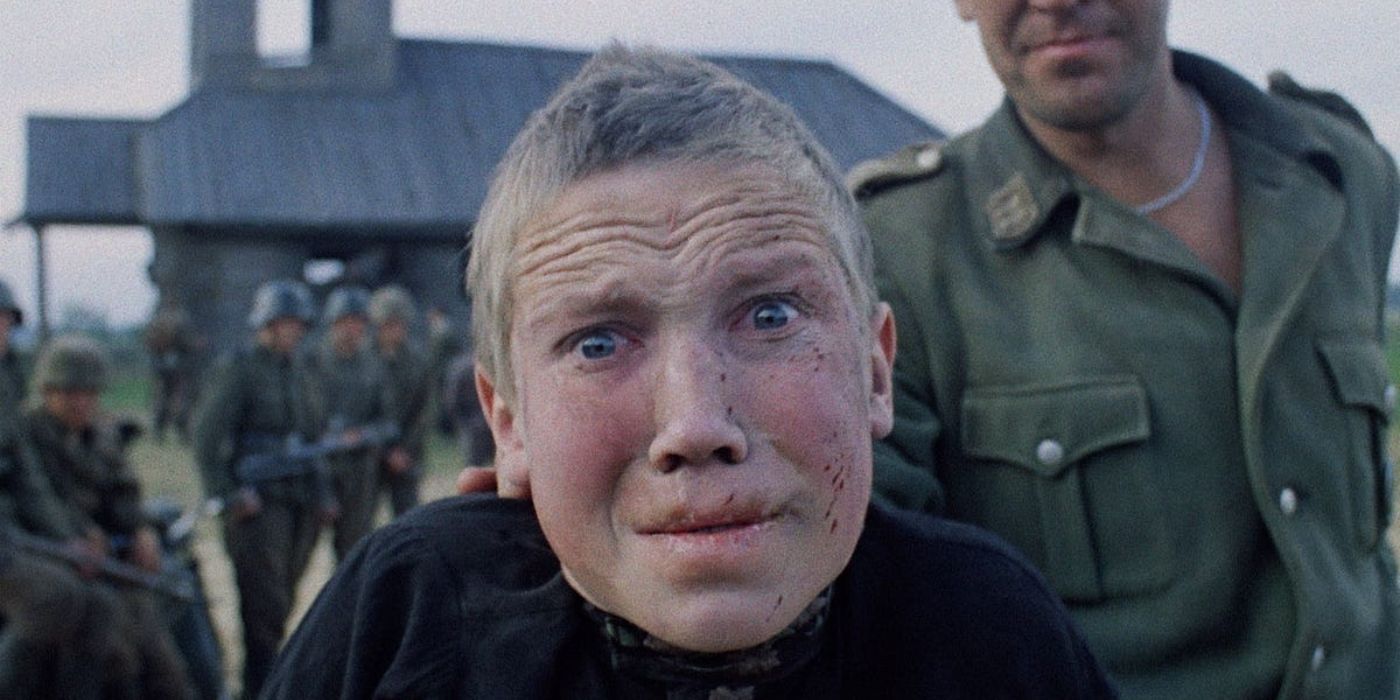
War films often aim to highlight the brutal realities of conflict. Yet, they frequently incorporate themes of patriotism and optimism to shield sensitive audiences from the more disturbing aspects. However, one movie that unflinchingly portrays every gruesome detail is Elem Klimov’s Come and See.
Although it contains minimal dialogue and a vague narrative, the movie effectively portrays the profound emotional and physical consequences of conflict as seen through the perspective of a young boy. In Russian, this film transcends linguistic barriers, offering an intensely vivid portrayal of World War II that feels almost surreal. The movie Come and See, which focuses on a specific historical event, has an impact that could be attributed to any form of conflict.
Come and See Overcame Many Censorship Issues
Come and See” revolves around a Belarusian boy named Flyora, who develops admiration for the Soviet Partisans upon finding a gun in a trench. The following day, Flyora is drafted with an enthusiastic grin. However, his aspirations are shattered when he’s detained at the camp. Later on, Flyora encounters a young woman named Glasha and attempts to escort her back to his village. Tragically, their journey takes a grim turn as Glasha witnesses that Flyora’s family has been brutally slaughtered by the Nazis.
Indeed, as anticipated, the young solider starts to lose touch with reality, consumed by remorse. He momentarily finds solace in Perekhody, yet this respite is fleeting, for the Germans herd everyone into a vast church barn. Floyra manages an escape, only to be horrified as he watches the church go up in flames, taking all within it. This scene remains one of the most emotionally harrowing moments in contemporary cinema. On the brink of reunion with his comrades, Floyra repeatedly fires at a portrait of Adolf Hitler. A series of images depicting Hitler’s life unfold in reverse, but come to an abrupt halt on a photograph of Hitler’s mother cradling him as an infant.
| IMDb Score | RT Score |
|---|---|
| 8.3/10 | 90% |
In 1985, one might assume that movie studios would welcome an overtly anti-war film. However, the State Committee for Cinematography found it objectionable, or even glorifying of a troubled past war. To complicate matters further, Klimov’s wife, Larisa Shepitko, passed away in 1979, leaving him to finish her work before he could start on Come and See. After eight long years, Klimov was finally given the green light to produce his film, but under the condition that the title “Kill Hitler” be changed to “Come and See”.
It’s not surprising that the Russian Film Committee might hesitate to approve a film like “Come and See“. Besides its graphic portrayals of violence, sexual assault, and mortality, the main character, Flyora, is an exasperating protagonist. Initially, he’s overjoyed at being among the older soldiers, oblivious to the peril his youth places him in. Remarkably, he even manages to bypass his entire family, despite their decomposing bodies being only a few steps away from his sight. This brief scene highlights Floyra’s naivety and lack of awareness as he appears to be unaware of the chaos unfolding around him.
As the movie unfolds, his appearance grows progressively emaciated, lending an eerie authenticity to the dreadful understanding that Floyra is ridden with remorse over enlisting in the army. Yet, he finds himself with no other options. The film “Come and See” is hard to admire due to its stark portrayal of conflict’s lessons, which are presented in a manner that feels almost unbearably grim.
The Filming Process Was Just as Disturbing as the Film Itself
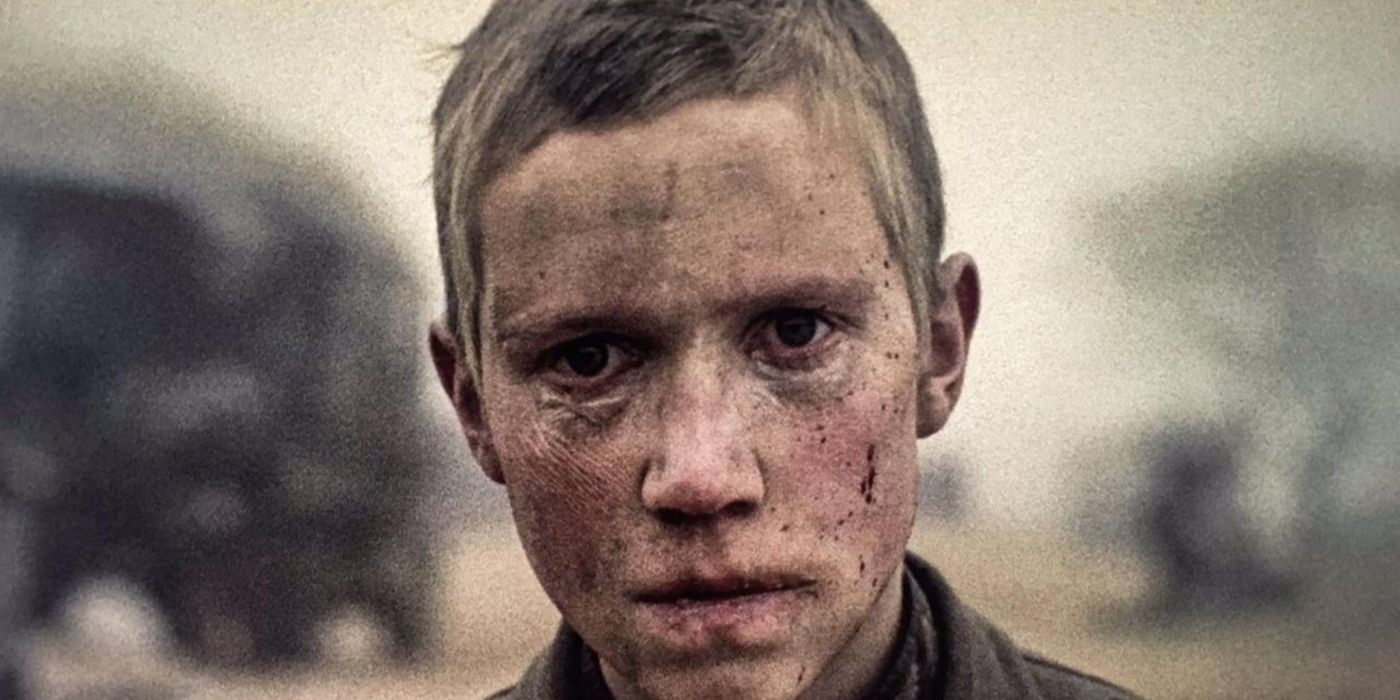
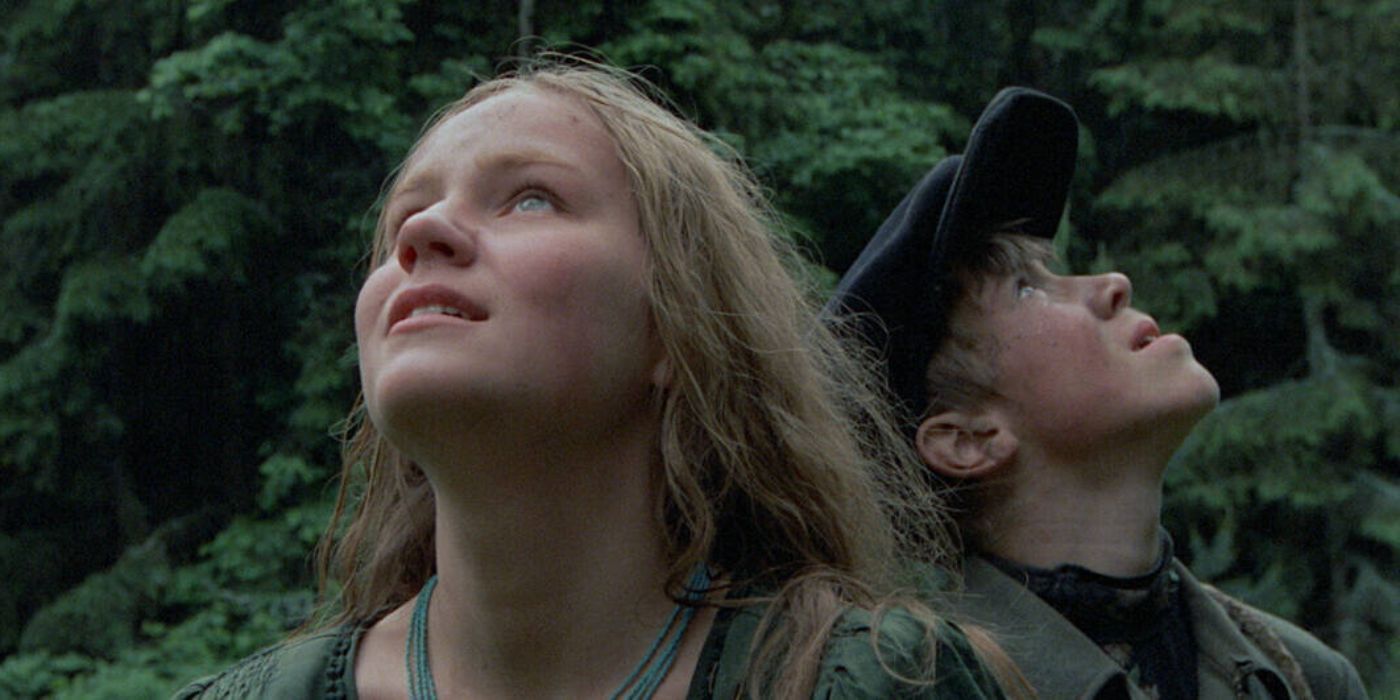
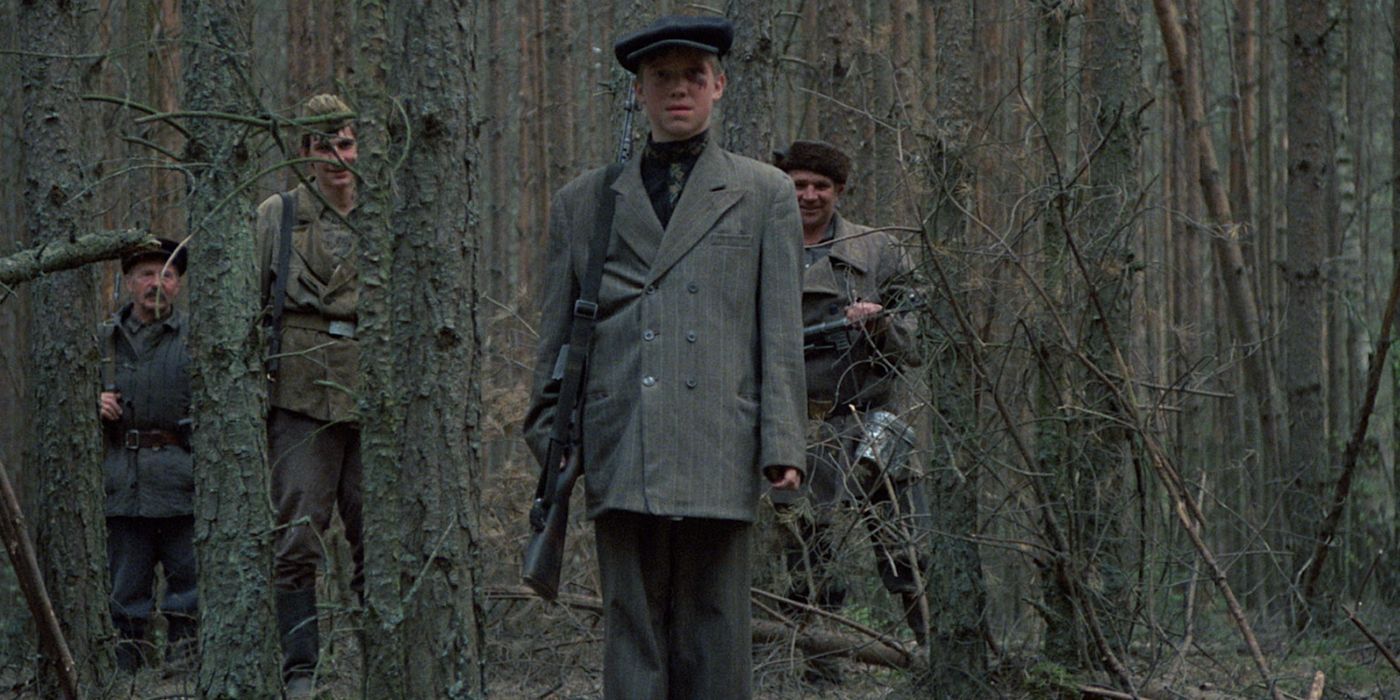
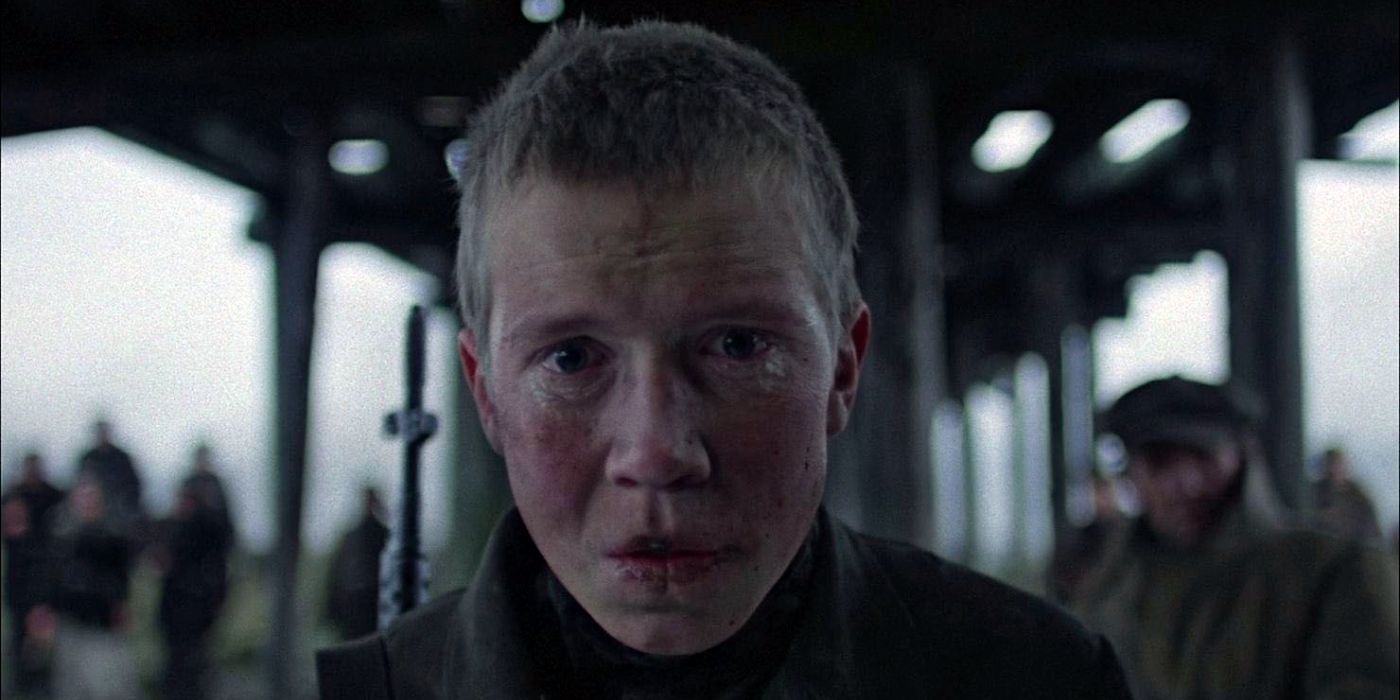
In “Come and See,” there isn’t as much emphasis on dialogue or plot progression, but it compensates by delivering stunning cinematography. The camera often gets very close to Floyra’s face at angles that can be a bit intense, yet this closeness allows viewers to fully appreciate his tormented expression and the gradual fading of light from his once innocent eyes. Each time Floyra recognizes his grave error, the camera employs a distinctive dolly-out shot, adding to the dreamlike quality of the scene.
Since the movie was filmed over a period of nine months, viewers appeared to witness Floyra’s decay unfold in real life. The incorporation of steadicams and subdued colors adds an authentic touch, giving off an impression that the world is losing its vibrancy – much like a teenager growing up. These artistic choices certainly lend a sense of maturity to the film.
remarkably, rather than using blanks, the makers of this movie opted for live rounds. On numerous occasions, these bullets whizzed past Kravchenko’s head, barely missing him due to his scant protection. Despite modern health and safety regulations possibly preventing such an incident today, the team’s commitment to the film is evident through their daring choices. Even as a young actor, Kravchenko underwent autogenic training to brace himself for the demanding filming experience. Interestingly, the director claimed that this self-relaxation method aided him in delivering an exceptional performance for his role. In an interview from 2001, he pointed out:
Come and See Is the Best War Film That Audiences Will Never Want to See Again
There’s a striking contrast in this film – it’s intensely emotional and powerful, often referred to as one of the most grueling war movies, yet it may not be something you’d want to rewatch due to its intensity. Essentially, it serves as a somber reminder that such large-scale conflicts should never happen again. This movie could be likened to “Come and See” or “Saving Private Ryan,” as it is deeply moving, albeit not excessively distressing. Its purpose is to shock viewers into understanding the devastating impact of war.
Today, this movie is no longer confined to film enthusiasts’ circles but is widely acclaimed as one of the most impactful films of the 20th century. Despite being a mature man with his own family, Aleksei Kravchenko remains eager to talk about his role in the film and continues to demonstrate his dedication as an actor. He took a break from acting after Come and See, but he resumed his career in 2000. Notably, he portrayed Garvrila in a production that shared similar themes and techniques as Come and See.
Undeniably, the film captivates its audience due to this very aspect. Despite prolonged sequences of surround sound and limited action, spectators find themselves drawn into the film’s world. This immersion is largely due to the fact that prior to this movie, information about the Khatyn Massacre was relatively scarce. However, the final scene delivers a powerful message through a title card: “628 Belarusian villages were obliterated, along with their inhabitants.” This revelation wasn’t necessary because the audience had already borne witness to the devastating events on screen.
Yet, this closing message serves as a gentle reminder for spectators that “Come and See” mirrors the heartrending reality of any soul-crushing global strife in which humanity’s essence is tested, spoken from one who has been deeply moved by its poignant portrayal.
Read More
- Who Is Harley Wallace? The Heartbreaking Truth Behind Bring Her Back’s Dedication
- Basketball Zero Boombox & Music ID Codes – Roblox
- 50 Ankle Break & Score Sound ID Codes for Basketball Zero
- TikToker goes viral with world’s “most expensive” 24k gold Labubu
- 100 Most-Watched TV Series of 2024-25 Across Streaming, Broadcast and Cable: ‘Squid Game’ Leads This Season’s Rankers
- Revisiting Peter Jackson’s Epic Monster Masterpiece: King Kong’s Lasting Impact on Cinema
- 50 Goal Sound ID Codes for Blue Lock Rivals
- League of Legends MSI 2025: Full schedule, qualified teams & more
- KFC launches “Kentucky Fried Comeback” with free chicken and new menu item
- All Songs in Superman’s Soundtrack Listed
2025-07-05 04:06